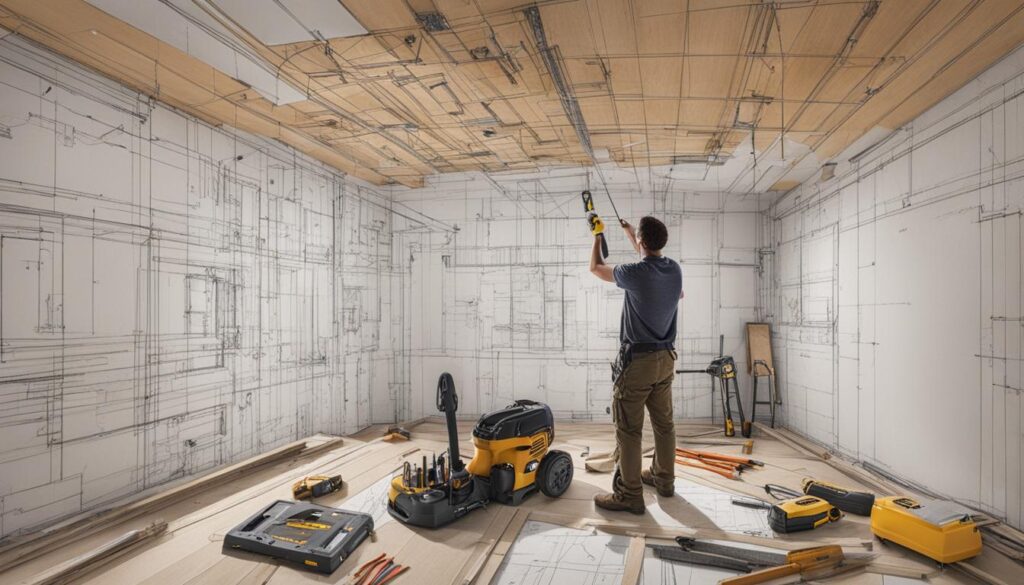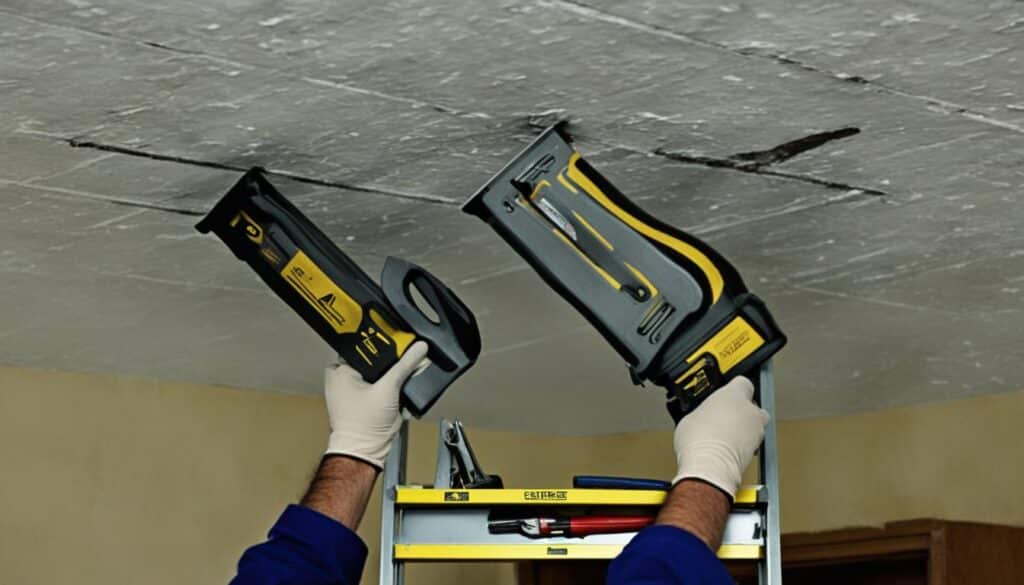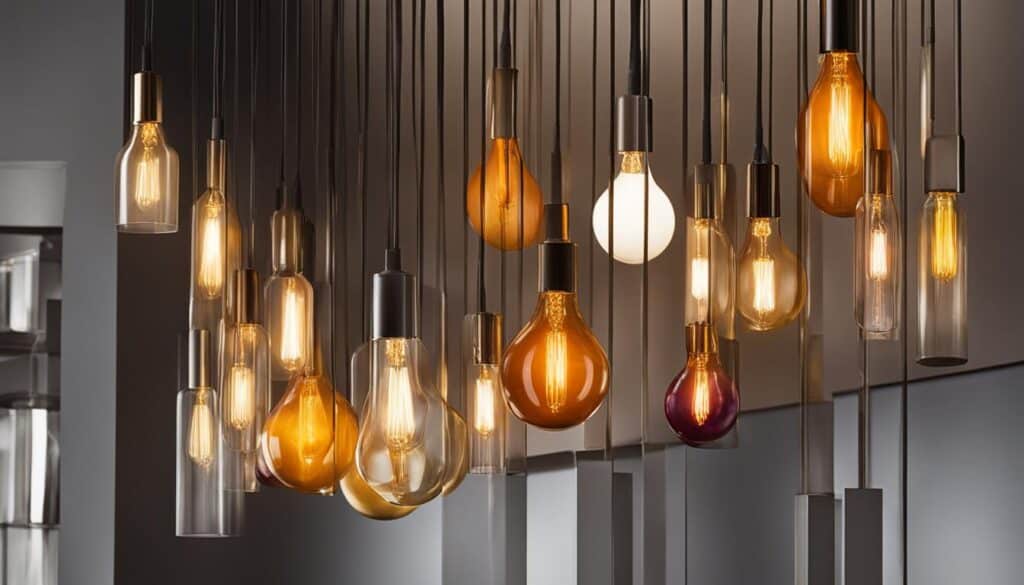Embarking on a DIY lighting installation project can seem daunting, especially when faced with the challenge of installing recessed lighting without attic access. This guide focuses on the process of enhancing a room’s ambiance using specialized recessed lighting fixtures designed specifically for remodeling projects. These fixtures ensure a smooth installation without the need for attic access or post-installation ceiling repairs. Through this tutorial, my aim is to provide a step-by-step guide that makes the process straightforward, even for those with basic electrical experience or planning to hire an electrician for the initial wiring setup.
Key Takeaways
- Select remodel-specific recessed lighting fixtures for installations without attic access.
- Craft a detailed lighting plan blueprint to pinpoint the perfect locations for the light fixtures.
- Arm yourself with the right tools and materials for a successful recessed lighting installation.
- Prioritize safety when working with electrical components, and consider hiring a qualified electrician if necessary.
- Be prepared to overcome obstacles such as locating joists and avoiding obstructions during installation.
- Select the appropriate bulbs for your new lighting system, considering their compatibility with dimmers and energy efficiency.
- Install a dimmer switch to enhance the functionality and ambiance control of your recessed lighting system.
Introduction to DIY Recessed Lighting Installation
Recessed lighting offers a sleek and modern aesthetic that can dramatically improve the ambiance and functionality of any space with its understated profile and targeted illumination. The appeal lies in its ability to blend seamlessly with the ceiling while providing ample light. However, the installation becomes trickier without attic access, typically required for a traditional recessed lighting setup. This challenge necessitates an alternative installation process that we’ll unpack, guiding you on how to achieve professional-level lighting without the need for attic entry.
The Appeal of Recessed Lighting
Recessed lighting has gained popularity in both residential and commercial spaces due to its minimalistic design and versatility. Its ability to provide a visually streamlined appearance while delivering desired levels of light makes it a top choice for various design styles. Furthermore, it’s an ideal solution for low-ceiling areas where surface-mounted light fixtures might feel obtrusive. This do-it-yourself lighting installation option truly allows you to transform the look and feel of any room, taking it from ordinary to extraordinary.
Understanding the Challenges Without Attic Access
Although recessed lighting comes with many benefits, it can be challenging to install recessed lighting without attic access. Traditional recessed lighting installation often requires access to the attic for wiring and mounting purposes. However, not every home has a readily available attic space, and others may have restricted or complicated attic access. In such cases, alternative installation options must be considered to achieve the desired recessed lighting effect without compromising the integrity of your home’s structure or needing to cut into the ceiling excessively.
Planning Your Lighting Project
A well-planned lighting project is the key to achieving the desired ambiance and ensuring a smooth installation process. This involves assessing the room’s layout and lighting needs, creating a lighting plan blueprint, and selecting the right recessed lighting fixtures suitable for installations without attic access.
Assessing Room Layout and Lighting Needs
In order to create an effective lighting atmosphere, it is crucial to analyze the layout and purpose of the room. Determining whether the goal is to achieve ambient, task, or accent lighting can help guide your decisions throughout the planning process. Consider factors such as room size, ceiling height, and existing light sources when developing your lighting installation strategy.

Creating a Lighting Plan Blueprint
Putting your lighting plan to paper is an essential step in the planning process. This will help you visualize the final result and ensure that your lighting goals are aligned with the room’s layout. Sketch out the room’s floor plan and include measurements for key elements such as windows, doors, and existing light sources. Once you have a clear understanding of the space, strategically place your light fixtures to achieve the intended lighting effects and eliminate dark spots, while avoiding any structural obstacles.
Choosing the Right Recessed Lighting Fixtures
Selecting the appropriate recessed lighting fixtures is crucial to the success of your project. For installations without attic access, remodeling-specific housings are highly recommended. These fixtures are designed with adjustable and flexible mounting features, allowing for easy installation in restricted spaces and ensuring optimal light output. When selecting recessed lighting, it’s also important to consider compatible trims that will seamlessly blend with your ceiling and enhance the overall look and feel of the space.
A well-thought-out lighting plan, coupled with the right recessed lighting fixtures, is the foundation for creating an inviting and functional environment. By keeping these lighting installation tips in mind, you’ll be well on your way to achieving professional-level results and transforming your space without attic access.
Tools and Materials for Recessed Lighting Installation
To successfully install recessed lighting, arm yourself with the right tools and materials. This includes remodeling recessed light fixtures available for purchase on platforms like Amazon, a pencil for marking, a handheld drywall saw, wire strippers and cutters, a flat screwdriver, and other essentials.
These tools aid in the process, from tracing the cutout patterns on the ceiling to making precise cuts without damaging surrounding areas, as well as safely preparing and connecting electrical wiring. The following list breaks down the essential tools and materials for recessed lighting installation:
- Remodeling recessed lighting fixtures
- Pencil for marking
- Handheld drywall saw
- Wire strippers and cutters
- Flat screwdriver
- Tape measure
- Stud finder
- Drill with hole saw
- Junction box
- Electrical wire and connectors
With the right tools and materials for recessed lighting installation in hand, you’ll be well-prepared to tackle your project without attic access, achieving professional-looking results in no time.
Pre-Installation Safety Tips
Recessed lighting safety should be a top priority before starting any lighting installation project. Even if you consider yourself a skilled do-it-yourselfer, it’s crucial to take all the necessary precautions to avoid accidents or damage.
First and foremost, if you lack the electrical experience, the ideal choice is to hire a qualified electrician to handle the wiring and connections. This not only ensures proper installation but guarantees that all electrical safety measures are taken care of.
However, if you’re determined to take on the electrical work yourself, there are important steps to follow:
- Before starting, switch off the power at the main breaker. Double-checking is essential to prevent any accidents.
- Confirm that the power is indeed off using a circuit tester to avoid dangerous surprises.
- Familiarize yourself with safe handling practices and the correct procedures for connecting wires and installing lighting fixtures.
Electrical safety for lighting installation cannot be stressed enough, and by educating yourself on the proper steps and precautions, you’re investing in a successful and hazard-free project.

How to Install Recessed Lighting Without Attic Access
Installing recessed lighting in the rooms of your home without attic access need not be a challenging task. With the right tools, materials, and knowledge of proper electrical safety protocols, you can easily install recessed lights without the need for attic access. In this section, we will discuss the various steps involved in dealing with electrical wiring safely, marking and cutting ceiling holes, and running electrical cables efficiently.
Dealing with Electrical Wiring Safely
First and foremost, always ensure there is no active power in the area you are working. You can confirm this with a circuit tester. It is essential to take electrical safety precautions to avoid accidents or damage. If you lack electrical experience, consider hiring a professional electrician to handle the electrical wiring for you.
Marking and Cutting Ceiling Holes
Once you have determined the desired light placement, use a pencil to mark the spots on the ceiling. Be sure to consider any structural impediments to avoid potential issues later. With a drywall saw in hand, carefully cut openings in the ceiling according to the size requirements of your recessed lighting fixtures. Precision is key in this step to maintain structural integrity and ensure optimal lighting placement.
Running Electrical Cables
After cutting the ceiling holes, the next step is to run electrical cables from a power source to each light fixture location. This process may involve drilling through joists and threading cables through the walls and ceiling. Take care to do this with precision in order to avoid any structural damage and sustain proper connections.
In summary, installing recessed lighting without attic access can be achieved with the right approach and attention to detail. Follow these steps, and you will not only enhance the ambiance of your space but also safely achieve professional-level lighting without attic access.
Identifying and Overcoming Obstacles During Installation
While carrying out your DIY recessed lighting installation, you may inevitably come across a few obstacles that could pose challenges. Fear not, as these issues can be effectively surmounted with the right approach, ensuring a successful project outcome. The most common obstacles encountered during installation include locating ceiling joists and addressing unexpected issues.

Locating Joists and Avoiding Obstructions
One of the most prevalent challenges encountered while installing recessed lighting is discovering existing joists or other structural components in the way of planned light positions. To effectively deal with this, use a stud finder (available at any home improvement store) to locate these obstructions before commencing your installation. In tight situations, resorting to a small exploratory hole can also be useful in revealing any hidden obstructions behind the ceiling surface.
Pro Tip: Be prepared with a plan B for alternative light positions if your original placements are obstructed by unexpected structural elements.
Handling Unexpected Issues
As is the case with any DIY project, unexpected issues can arise during the installation process, even with careful planning. The key to success is being able to adapt and resolve these unforeseen difficulties without compromising safety or breaking any building codes. A few common unexpected issues you might face include:
- Erroneously cut ceiling holes that are too large or too small for your recessed light fixtures
- Difficulty in running electrical wires through joists and other obstructive elements
- Encountering leaks or pipes that need rerouting or repair
To overcome these issues, remain patient and flexible, anticipating the need to adjust your plans if faced with any of these challenges. Moreover, always prioritize safety when working with electricity and structural elements, employing the help of a qualified electrician when necessary.
Securing Wiring and Installing Recessed Lights
Once the openings are cut and the path for the cables is clear, the next step is to securely pull the wires through and connect them to the junction box of the recessed light fixtures. This involves stripping the wires, making the correct color-coded connections, and fastening the wires with wire connectors. Carefully feed the junction box into the opening and mount the fixture into the ceiling.
Ensure that the attachment tabs are locked into place to hold the fixture securely against the ceiling. Securing electrical wiring and installing recessed light fixtures can be a breeze if you follow these steps diligently and pay attention to the recommended safety measures.
After successfully installing the recessed light fixtures, turn the power back on and test your new lighting setup to verify its functionality. With your newly installed recessed lights, you can now enjoy a sleek and modern aesthetic that thoroughly enhances the ambiance and functionality of your space.
Choosing the Right Bulbs for Your Recessed Lights
After you’ve successfully installed your recessed lighting fixtures, selecting appropriate light bulbs is crucial to ensure the efficacy and safety of your new lighting system. With various bulb types available and different considerations to keep in mind, making the right choice may seem a bit overwhelming. In this section, we’ll break down the importance of selecting the correct bulb type and considering energy efficiency when choosing bulbs for your recessed lights.
The Importance of Selecting the Correct Bulb Type
Different bulb types, such as halogens or compact fluorescent lamps (CFLs), have varying light quality and energy consumption. When selecting light bulbs for your recessed lights, it’s essential to consider their compatibility with dimmers, as well as whether the bulbs are conducive to your lighting purposes (be it for general ambiance, highlighting artwork, or providing task lighting). 
Energy Efficiency Considerations
Energy-efficient lighting is becoming increasingly important to homeowners, not only for environmental reasons but also for reducing utility costs. CFLs and LEDs offer reduced energy consumption as opposed to traditional halogen bulbs, without sacrificing luminosity. Additionally, energy-efficient bulbs often have a longer lifespan, which means less frequent replacements.
In summary, carefully consider the specific lighting needs, compatibility with dimmers, and energy efficiency when selecting light bulbs for your recessed lights. Choosing the right bulbs will help enhance the overall ambiance and functionality of your new lighting system while contributing to a more sustainable and energy-efficient home.
Installing a Dimmer Switch for Ambience Control
Enhance the functionality of your recessed lighting by incorporating a dimmer switch, which allows you to adjust the brightness levels for any activity or time of day. Not only does this addition improve ambiance control, but it can also result in energy savings and potentially increase the lifespan of your bulbs.
The Advantages of Dimmable Recessed Lighting
With dimmable recessed lighting, you can create various moods and atmospheres in your living space. The ability to adjust the brightness ensures that your home always feels comfortable and welcoming. Furthermore, using dimmers can lead to significant energy savings, as you only consume the necessary amount of electricity for your preferred lighting level.
Step-by-Step Dimmer Installation Guide
When installing a dimmer switch, begin by turning off the power at the main breaker, then carefully connect the switch to the power source and the designated light fixture. Ensure that all wires are securely wrapped and secured with wire nuts, paying close attention to the ground connection. Finally, replace the faceplate and revel in the newfound flexibility of your lighting system. By following these simple steps, you can transform your space with tailored recessed lighting that accommodates everyone’s needs and preferences.
FAQ
What are the benefits of recessed lighting?
Recessed lighting offers a sleek and modern aesthetic that can dramatically improve the ambiance and functionality of any space with its understated profile and targeted illumination. The appeal lies in its ability to blend seamlessly with the ceiling while providing ample light.
Can recessed lighting be installed without attic access?
Yes, it is possible to install recessed lighting without attic access by using specialized recessed lighting fixtures designed specifically for remodeling projects. These fixtures ensure a smooth installation without the need for attic access or post-installation ceiling repairs.
What tools and materials are needed for recessed lighting installation?
To successfully install recessed lighting, you’ll need tools and materials such as remodeling recessed light fixtures, a pencil for marking, a hand-held drywall saw, wire strippers and cutters, a flat screwdriver, and other essentials.
How do I plan my recessed lighting project?
Thoroughly assess your room’s layout and the specific lighting needs, which can vary depending on whether you want ambient, task, or accent lighting. Creating a detailed lighting plan blueprint is essential in pinpointing the perfect locations for the light fixtures and selecting the right recessed lighting fixtures for installations without attic access.
What are some safety tips to keep in mind during a recessed lighting installation?
Before starting the installation process, switch off the power at the main breaker, and confirm this with a circuit tester. If you’re not experienced with electrical work, consider hiring a qualified electrician to handle the wiring. Familiarize yourself with safe handling and connection practices to prevent accidents or damage.
How do I choose the right bulbs for my recessed lights?
Consider compatibility with dimmers and whether the bulbs are conducive to your lighting purposes, such as for general ambiance, highlighting artwork, or providing task lighting. Take into account energy efficiency, with CFLs and LEDs offering reduced energy consumption compared to traditional halogen bulbs without sacrificing luminosity.
What is the benefit of installing a dimmer switch for recessed lighting?
Installing a dimmer switch allows you to adjust the brightness levels of your recessed lights, creating the perfect ambiance for any activity or time of day. The advantages extend to energy savings and potentially elongating the lifespan of your bulbs.

